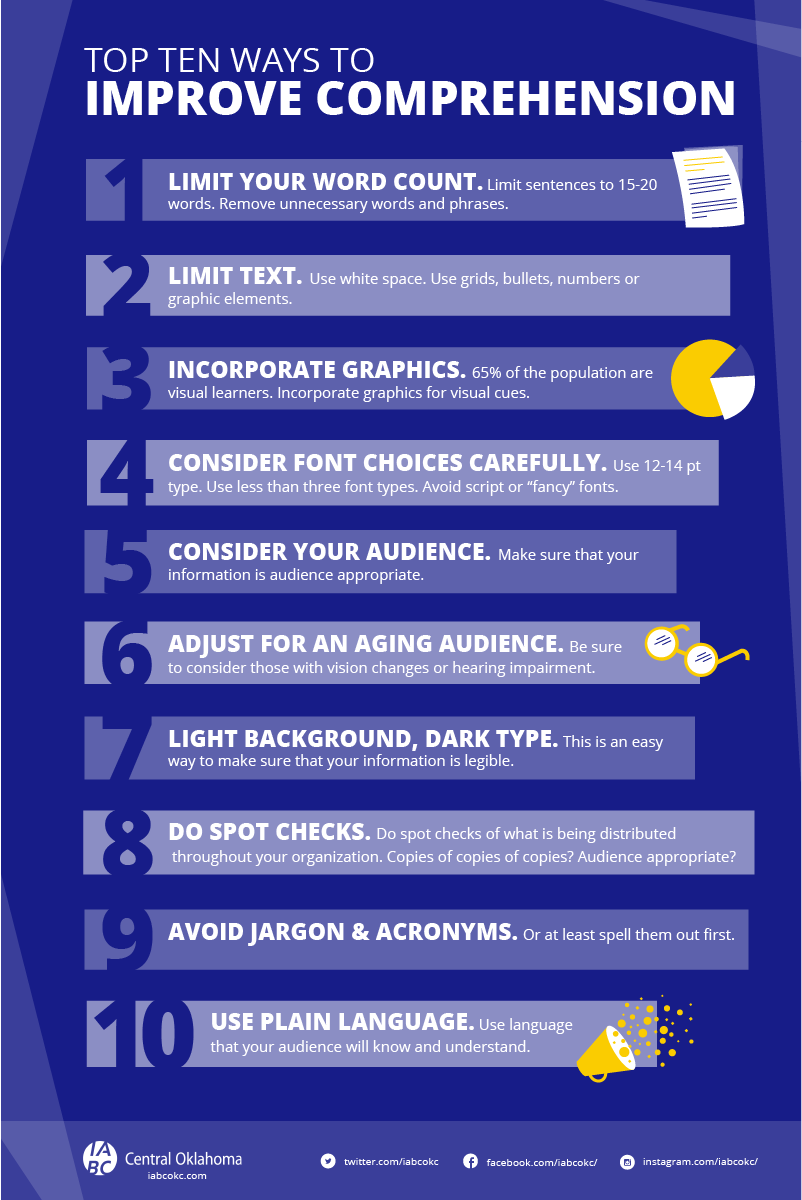

The present study examined the effect of visual aids in online reading comprehension. "Research results showed that students who demonstrated a 35 percent comprehension and recall rate before learning the strategy improved to an 86 percent comprehension and recall rate after learning the strategy. Prior work has shown that visual aids can improve comprehension of material for learners, and thus may be a valuable tool to redress digital comprehension deficits (Bransford & Johnson, 1972 Majidi & Aydinlu, 2016). “As they read, good readers frequently make predictions about what is to come.”- Duke & Pearson, 2002

“Proficient learners build on and activate their background knowledge before reading, writing,speaking, or listening poor learners begin without thinking.”- Irvin et al., 1996 Encourage students to monitor their comprehensionMaking meaning from something that is heard (oral comprehension) or from print (reading comprehension). When it comes to comprehension, this saying might be paraphrased, ‘a visual display helps readers understand, organize, and remember some of those thousand words.’”¹¹- Duke & Pearson, 2002 features of language, as it may actually help them to improve the performance. “There is an old saying that a picture is worth a thousand words. Studies that show low effects of visual cues in listening comprehension. Testimonials for the use of visual reading comprehension strategies: This means the reader connects their thoughts into visual representations to better understand the literature. better in the grammar test and poorer on the reading comprehension test than the. By adding an understanding of the impact of punctuation and small abstract words, the Davis approach provides a particularly powerful tool that can be used by readers of all skill levels. Reading comprehension using visual strategies is understanding the text through the use of pictures, imagery, and graphic organizers. A great way to develop childrens visual comprehension skills, this visual comprehension worksheet allows children to use pictures, adverts, charts and maps. Two experiments were conducted to examine the effects of visual input. The use of visualization to build comprehension skills is supported by a substantial body of research. You should communicate with your child and find some strategies they find fun and successful for them, so you can start creating a more pleasurable reading experience that will last them the rest of his/her life. Strengthen English Visual Text Comprehension For Lower and Upper Secondary Levels enhances students understanding of how language and visuals are used to. The results show two sets of findings: that a developmental continuum appears to exist for the comprehension of visuals, and that there are some instructional strategies for enhancing comprehension along the continuum.Not every child is a visual learner and not every strategy will work with every child. To address this research question, a research synthesis was conducted.

Both of these problems can be addressed by asking the research question of how the comprehension of pictures develops and assists children to comprehend expository texts as the children progress through elementary school. The problem related to this reading of visuals is teachers not understanding students' process for comprehension of images, and that leads to the secondary problem of teachers not being able to assist students in the comprehension of complex texts which contain pictures, illustrations, and images. Therefore early childhood educators should be aware of "image reading" when they are "considering the kinds of meaning making children do with books prior to conventional reading" (Lysaker & Hopper, 2015, p. Abstract Although recent reading programs such as Let's be Friends by Houghton Mifflin (2001) and the Common Core Modules (Common, 2012) emphasize learning to read the words (the "print") and seem to ignore the reading of illustrations (the "visuals"), emergent readers first learn to "read" by reading visuals not words.


 0 kommentar(er)
0 kommentar(er)
